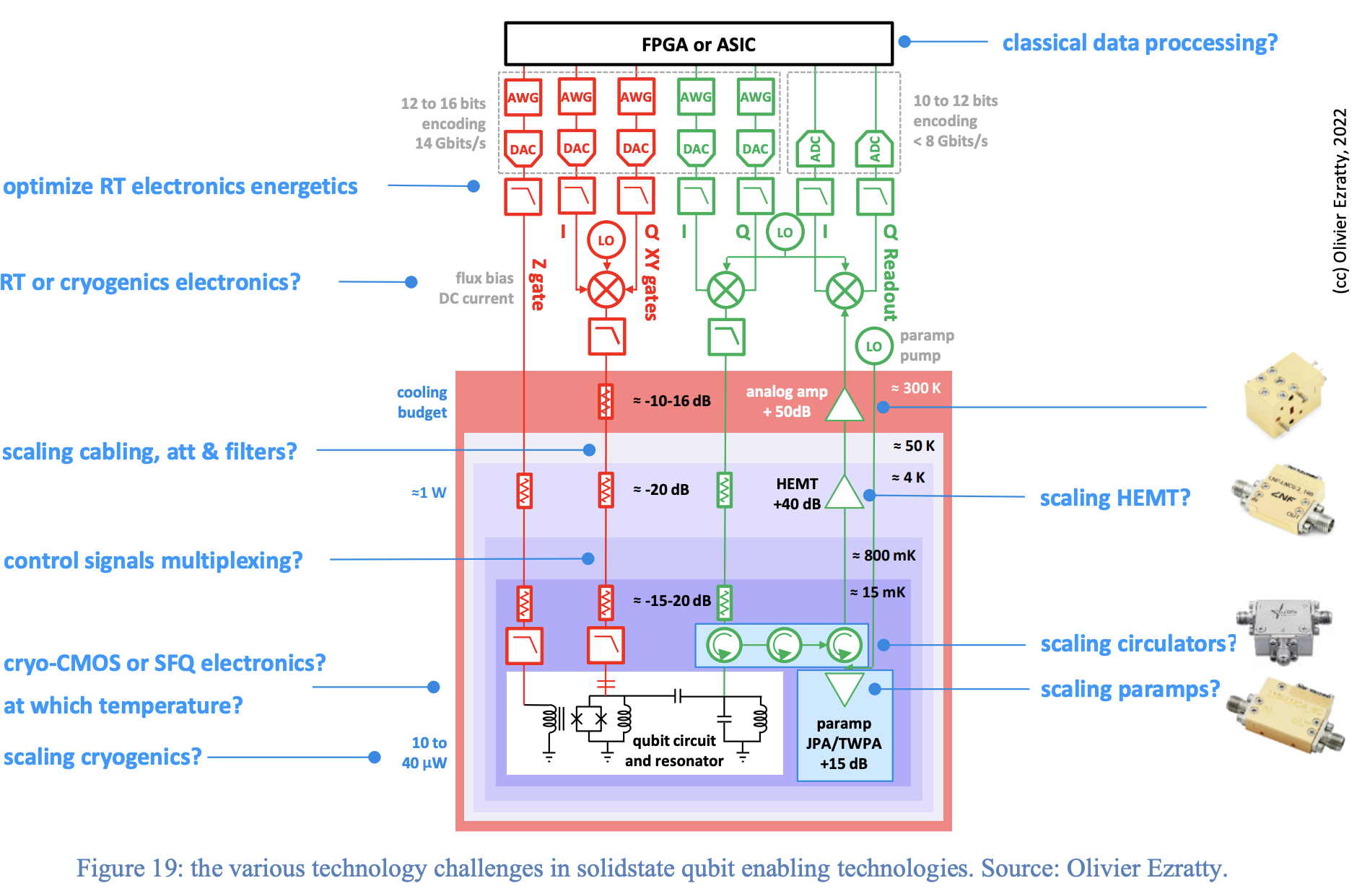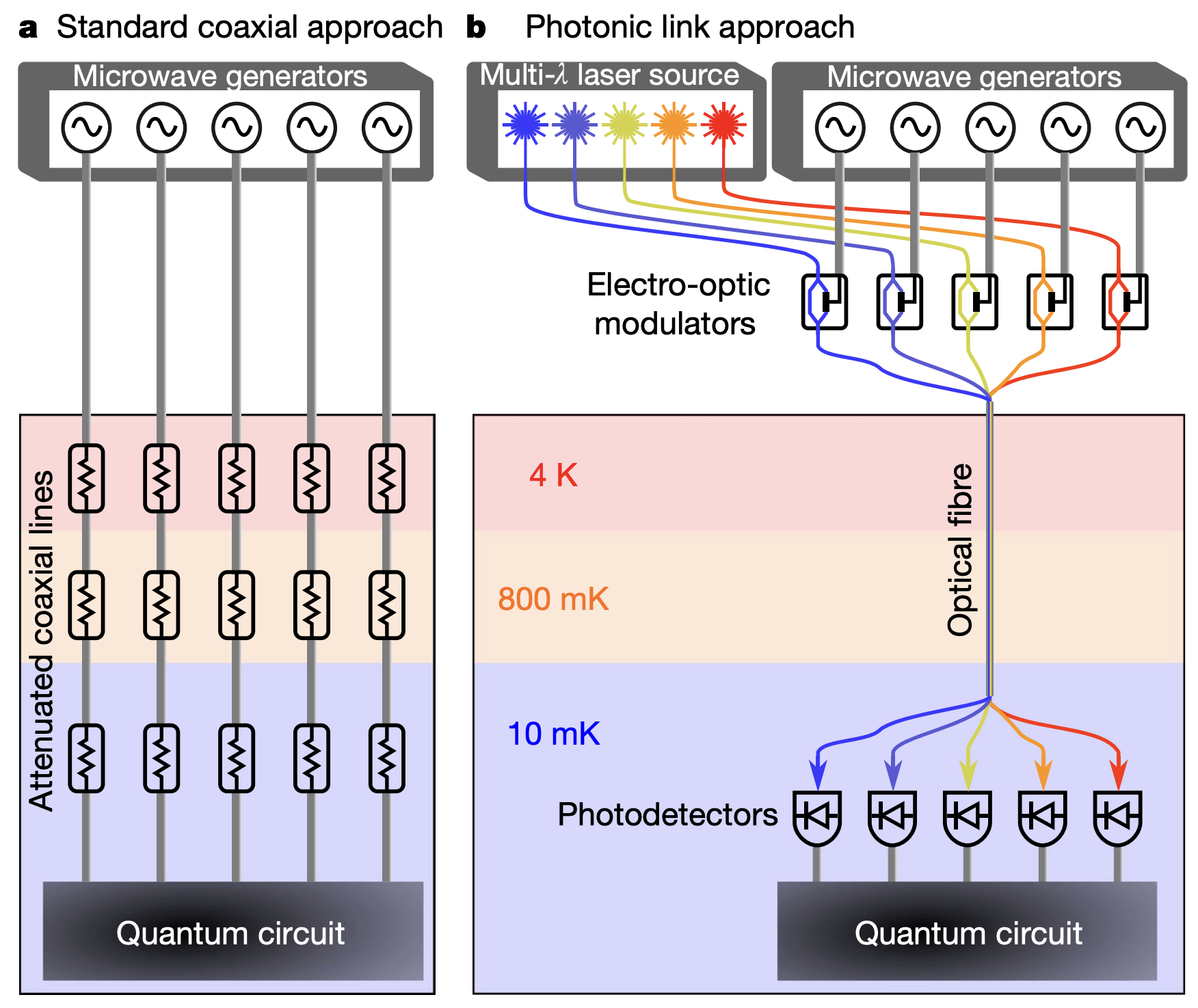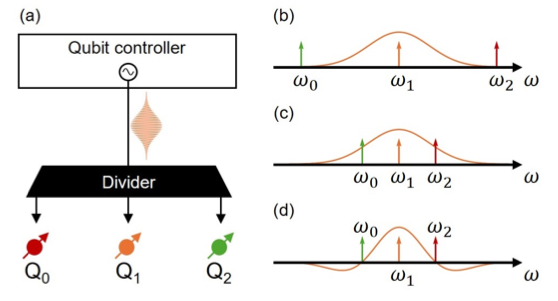How Are Signals Delivered to Qubits?
In the previous section, we discussed the complex hardware design of quantum computers. Here, we briefly explain the signal delivery system for controlling superconducting quantum computers. Control signals are generated by arbitrary waveform generators (AWG) as digital signals, converted to analog signals via digital-to-analog converters (DAC), filtered through multiple layers, and then sent to the quantum circuit. Feedback signals are converted back to digital signals using analog-to-digital converters (ADC) for measurement.
Ref: arxiv: 2303.15547
The images above illustrate the complex layers of wiring passing through the cryogenic chamber into the qubits. Designing such intricate wiring while ensuring noise reduction and thermal isolation increases costs and error rates, making scalability challenging. Below are two potential solutions to reduce the number of wires:
▲ Fiber optic solution: (a) shows traditional control wiring, while (b) demonstrates the use of wavelength-multiplexed carrier signals. Control signals are sent via fiber optic bundles into the chamber after being converted into corresponding carriers by optical-electrical converters.
Ref: DOI: 10.1038/s41586-021-03268-x
▲ By isolating qubit frequencies and designing specific control spectrum signals, multiple qubits can be controlled via a single control line.
Ref: arXiv:2501.10710v1
Originally written in Chinese by the author, these articles are translated into English to invite cross-language resonance.



 Peir-Ru Wang
Peir-Ru Wang